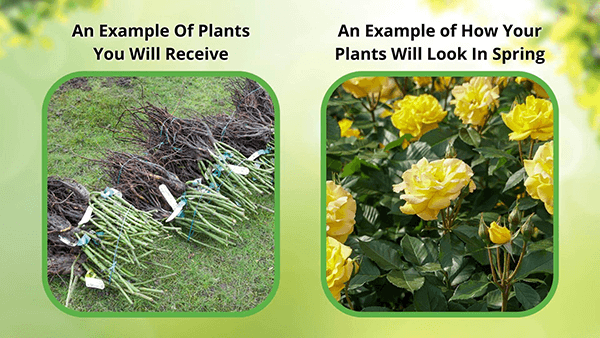Red Chokeberry
Red Chokeberry
| Order | Percentage Discount | ||
|---|---|---|---|
| 2-5 | 25% Off | ||
| 6-10 | 30% Off | ||
| 11-25 | 35% Off | ||
| 26-50 | 45% Off | ||
| 51-100 | 65% Off | ||
| 101-250 | 70% Off | ||
| 251-500 | 80% Off | ||
| 501+ | 85% Off | ||
Couldn't load pickup availability
5-7 Days
Under 10 Feet
Sun or Shade
4-9
Berry
Bare-root
HI.
Red Chokeberry - Aronia Arbutifolia
Are you looking for a plant that adds vibrant color to your landscape and provides ecological benefits? Look no further than the Red Chokeberry (Aronia arbutifolia). This hardy shrub is native to North America and boasts many features that make it an excellent choice for homeowners and landscapers.
Plant Appearance
They get their name from their striking scarlet-red fruit, which appears in clusters on the plant in late summer and early Fall (End of October). The plant's leaves are glossy green during summer and take on shades of yellow, orange, and red in the autumn, making it an excellent choice for adding seasonal interest to your landscape.
Red Chokeberry's Benefits
Besides their aesthetic appeal, they also provide various ecological benefits. Its flowers provide an important nectar source for pollinators, while its fruit is a valuable food source for birds and other wildlife. The plant's roots also help prevent soil erosion and improve water quality by filtering pollutants.
Plant Requirements
The shrub is relatively low-maintenance, making it an outstanding choice for homeowners and landscapers who want to add visual interest to their landscape without much fuss. It prefers well-drained soil and can tolerate a range of soil types, including sandy and clay soils. It is also drought-tolerant once established, making it an excellent choice for areas with hot, dry summers.
Uses In Landscape
They are versatile plants used in various landscape designs. They work well as a border or hedgerow plant, providing a natural barrier between different areas of your landscape. They can also be planted in a mass to create a bold statement or used as a focal point in a mixed planting bed. If you're looking for a beautiful and beneficial plant, the Red Chokeberry is an excellent choice. Its striking color, ecological benefits, and low-maintenance requirements make it a perfect addition to any landscape design.
It is a perennial shrub that grows up to 12 feet tall and has something for the eye each season. In the spring, these plants begin as numerous flat white flowers with five petals and bright red anthers.
Throughout the summer, their foliage turns to a dark, glossy green, which gives way to a deep reddish orange in the fall. Red, pear-shaped berries also appear in the fall. This plant's reddish-brown bark and bright red berries add color to the winter's snowy landscape throughout December and January.
The shrubs grow in colonies that can become quite large. Many use these shrubs to add a naturalistic feel to their landscapes. While the berries last through winter, they do not seem a staple to much wildlife. They are only occasionally eaten by songbirds, game birds, and reportedly by bears. These plants are available commercially or can be propagated by softwood cuttings or seed.
Hormone treatments are not needed for softwood cuttings to root. The seeds will be removed and collected from the ripened fruit in mid-autumn. Although, the fruits can be allowed to dry with the seeds inside. The plants use a high volume of water and need plenty of sunlight to grow to their full potential.
They grow best in moist, rich soils with an acidic pH of less than 6.8. These plants bloom their many white flowers in early May and bear fruit throughout the fall and winter months. They keep their dense foliage throughout the spring and summer months.
This plant is tall and deciduous, averaging 6-8 feet tall and wide. It thrives in winter, fall, and spring and has beautiful white blossoms. It also yields small tart fruit. To keep this shrub healthy, it should be planted in moist, well-drained soil and receive partial to full sunlight.
This Is How Your Plants Will Look upon Delivery
Bloom/Foliage Color
White
Shipping date depends on the date displayed and chosen when you order from the product's page.
We only accept returns on plants verified dead. If you think your plants have died, we offer a 1 year warranty, please use use this File a Claim Link to verify dead plants and start with return warranty process.









